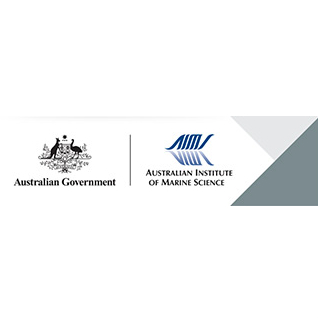Brief description
Colonies of massive Porites corals were collected in March 1994 from 10 transects established by Natural Systems Research (NSR) Environmental Consultants on the fringing reefs adjacent to a gold mine, located on the southeastern end of Misima Island, Papua New Guinea. Transects were laid within zones of varying sediment impact: severe (centred on the soft waste dump); transitional (either side of the severe impact zone); minor (beyond the transitional zones); and controls (located well east and west of the impact zone and one on the northern side of the island).Of the 104 colonies collected, 93 were found suitable for analysis of growth characteristics. The species of coral colonies analysed were: Porites lutea (40); Porites lobata (33); Porites australensis (11); Porites mayeri (7) and Porites sp. (2).Each colony was cut in half and at least two, 6-7 mm thick slices were cut vertically, close to the centre of each half-colony, air-dried and X-rayed. Positive prints of the X-rays were used to identify two tracks across each slice and skeletal density measurements were made at 0.25mm intervals along each track using a gamma densitometer. The slices were dated by assuming that the high density peak closest to the outside edge had formed during the 1993-1994 austral summer. Seven colonies could not be dated, as they were dead when collected. Using density and dating data, the following growth parameters were calculated: annual average density (g/cm³); annual extension rate, measured as the distance between successive high density maxima (mm/y); and annual calcification rate, calculated as the product of average annual density and annual extension (g/cm²/year). These values were then averaged for each colony for the 10 year period 1984-1993 and for the two 5 year periods before and after mining operations commenced (1984-1988 and 1989-1993).Measurements of tissue thickness were made where the density track crossed the tissue layer using a digital caliper. On the corals that were dead when collected, the tissue layer thickness was estimated from the depth of the most recent dissepiment.Average daily sedimentation rates (mg/cm²/d) were calculated using data from sediment traps, maintained by NSR Environmental Consultants, adjacent to each of the 10 transects. Averages were calculated over the period January-March 1988 (prior to commencement of mining activities) and over subsequent 3 month periods up to March 1994. Sea surface temperatures were obtained from the Global Ocean Surface Temperature Atlas Plus (GOSTAplus, Meteorological Office, UK). Monthly rainfall data from Bwagaoia (about 5 km from the mine site) were totalled for the same 3 month periods as the sediment data. This research was undertaken to determine if there were changes in skeletal growth characteristics of massive Porites corals in response to the sudden, massive increase in sedimentation resulting from mining activities on Misima Island. The influence of rainfall and sea surface temperature on growth characteristics was also considered. The depth of the coral skeleton occupied by tissue was also examined, as previous research suggested that tissue thickness should decrease under adverse conditions. Construction of the mine commenced in April 1988. Materials were dumped across the adjacent fringing reef to build a 400m wide platform, which extended 50-100m offshore. Soft mine waste, mainly comprised of soil and weathered, friable rock was dumped from this platform down the reef slope into deep water. Dumping ceased in November 1993.Lineage
Maintenance and Update Frequency: notPlannedNotes
CreditLough, Janice M, Dr (Principal Investigator)
Modified: 17 10 2024
text: westlimit=152.817122; southlimit=-10.69949; eastlimit=152.817122; northlimit=-10.69949
Variability in growth characteristics of massive Porites on the Great Barrier Reef. CRC Reef Research Technical Report No. 28: Lough JM, Barnes DJ, Devereux MJ, Tobin BJ and Tobin S (1999) Variability in growth characteristics of massive Porites on the Great Barrier Reef. CRC Reef Research Technical Report No. 28. 28. CRC Reef Research Centre. 95 p.
local : articleId=1502
Porites growth characteristics in a changed environment: Misima Island, Papua New Guinea: Barnes DJ and Lough JM (1999) Porites growth characteristics in a changed environment: Misima Island, Papua New Guinea. Coral Reefs 18: 213-218.
local : articleId=1099
Map
uri :
https://data.aims.gov.au/mestmapkml/e9e435d0-b04b-45bd-a054-0be9d93d825f.kml![]()
- global : e9e435d0-b04b-45bd-a054-0be9d93d825f


